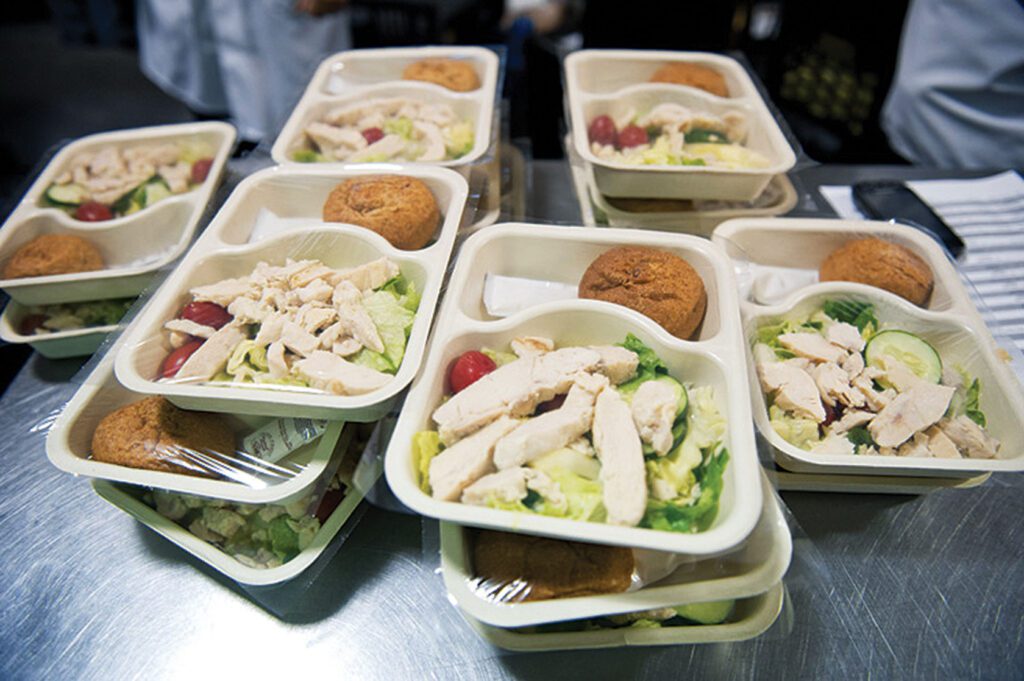
Free school lunches for all students — once a pandemic-era relief effort — will soon become the new norm in Massachusetts, after Gov. Maura Healey signed a $56 billion state budget into law last week.
The governor’s first budget showed major investments in education, such as covering community college tuition for students and extending in-state tuition rates to immigrants without documentation.
It also includes investing $172 million in permanent funding to provide universal school lunch for public school students in kindergarten to the 12th grade — a move that makes Massachusetts one of eight states to offer universal free school meals.
“This budget makes significant investments in schools, child care, clean energy, the environment, and access to mental and physical health care,” Healey said in a press statement.
The free lunch program is expected to save families $1,200 per student each year and help those previously on the cusp of qualifying for free school lunches, state officials said. Black and Latino children, who data shows are at a higher risk of facing food insecurity, will also benefit from the program.
During the pandemic, the federal government allowed schools to serve free breakfast and lunch to students regardless of their parents’ income. However, funding for the program ceased, leaving it up to each state to decide whether to continue providing free meals.
“Food security is essential for the health and well-being of our students,” said education Secretary Patrick Tutwiler in a statement. “Aligned with our goals to stabilize, heal, and transform our education system, this funding will ensure that students can focus on their classes in school, instead of where their next meal is coming from.”
Food insecurity rates among Massachusetts households soared during the height of the pandemic and continued to rise in the following years — increasing from 19% in 2019 to 33% in 2022, according to a report released this year by the Greater Boston Food Bank.
The figures are even higher for Black and Hispanic households. In Black households, food insecurity increased from 31% in 2019 to 50% in 2022, the report said.
Among Hispanic households, it rose from 44% to 61% during the same period.
Child food insecurity rates were also higher for Black and Hispanic children at 42% and 53%, respectively.
“Food insecurity is a symptom of poverty,” said Catherine Lynn, spokesperson for Greater Boston Food Bank. “We still have a lot of work to do in order to address the inequities and to make sure that those populations have equal opportunity.”
Project Bread, one of the organizations that pushed the free lunch legislation, reported that from October 2019 to October 2022, more than 80,000 additional students in Massachusetts ate lunch daily in schools that were not previously providing universal free meals.
Many families said free school meals were a major source of nutrition for their children that also gave them economic relief during the height of the pandemic, said Erin McAleer, the CEO of Project Bread, in an interview.
“School meals really matter,” McAleer said. “For low-income kids, over half their daily calories can come from school meals. Making sure that they’re free, accessible, appealing and nutritious is just so critical and the pandemic just shined a light on it.”
Officials at some school districts that were offering free lunches before the pandemic said they were pleased that the free-lunch program will be expanded across the state.
“Before, it was either you eat free, reduced or you paid. And there’s a lot of pressure for students that go around that,” said Timothy Gray, the food service administrator for Springfield Public Schools. “[Free lunch] puts everybody on an equal playing field. So that that pressure of being free, reduced or paid is gone and everybody is the same.”
Springfield, which offered free lunch before the pandemic, was a part of the federal Community Eligibility Provision program that allows school districts with the highest levels of students living in poverty to serve free breakfast and lunch without collecting household applications.
Roughly 90 percent or more of Springfield’s students are either people of color, students with high needs, or students who are low income, according to state data.
Parents and students who previously participated in their district’s free lunch program welcomed the statewide initiative, saying it will be a boon for financially struggling families who can’t afford to pay for meals at school.
“When you’re working a full-time job for 20 years in one place, you don’t worry about food insecurity and not being able to pay certain bills. [Free school meals] were very helpful in relieving some money from my pocket,” said Musu-kulla Massaquoi, a mother of a Cambridge student who relied on school-based free meals after she was furloughed from her job in 2020, terminated in 2021 and struggled to make ends meet.
Omar Mohuddin, a sophomore at Northeastern University, said the free lunches he received at his alma mater, Woburn Memorial High, helped him get through the school day. Now it will help other students, too, he said.
“Usually, these kids weren’t eating lunch at all,” Mohuddin said. “They were probably just sitting through lunch, just talking, not really eating.”






